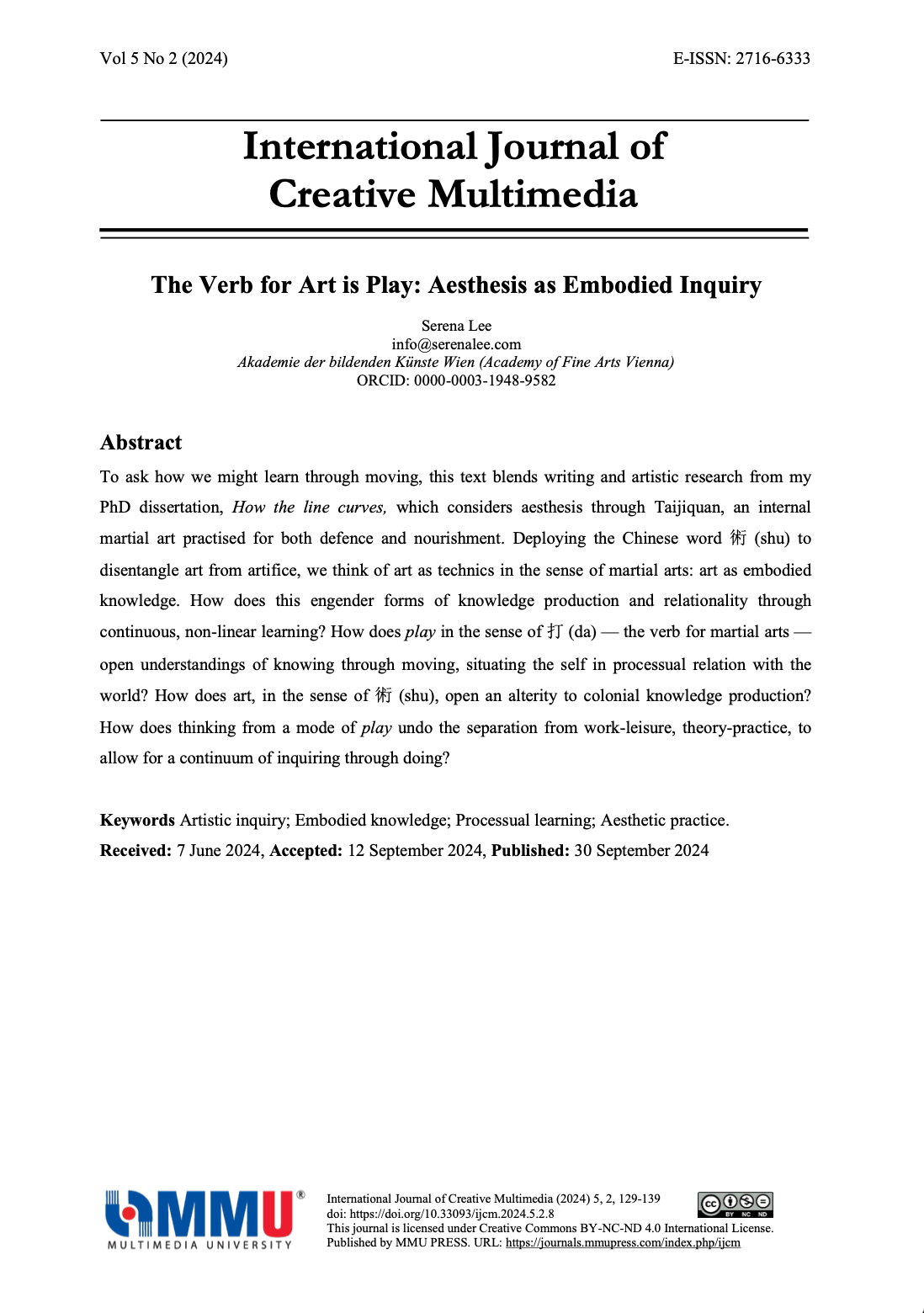The Verb for Art is Play: Aesthesis as Embodied Inquiry
Main Article Content
Abstract
To ask how we might learn through moving, this text blends writing and artistic research from my PhD dissertation, How the line curves, which considers aesthesis through Taijiquan, an internal martial art practised for both defence and nourishment. Deploying the Chinese word (shu) to disentangle art from artifice, we think of art as technics in the sense of martial arts: art as embodied knowledge. How does this engender forms of knowledge production and relationality through continuous, non-linear learning? How does play in the sense of (da) — the verb for martial arts — open understandings of knowing through moving, situating the self in processual relation with the world? How does art, in the sense of (shu), open an alterity to colonial knowledge production? How does thinking from a mode of play undo the separation from work-leisure, theory-practice, to allow for a continuum of inquiring through doing?
Article Details

This work is licensed under a Creative Commons Attribution-NonCommercial-NoDerivatives 4.0 International License.

